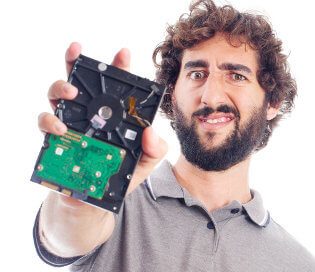Looking for something? Refine your search
- Categories
- Backup
- Cloud
- Computer Forensics
- Computing and CPU Power
- Cryptocurrency
- Damage
- Data Loss Prevention
- Data Recovery Knowledge
- Data Recovery News
- Data Recovery Service
- Data Types
- Database
- Digitization
- Encryption
- Flash Drive
- Hard Disk
- Investing and the Stock Market
- Mac/Apple
- Media
- Mobile Device
- NAS
- Network Security
- Office Documents
- Outreach
- Photos & Images
- RAID
- Ransomware Recovery
- Removable Media
- SAN
- Secure Deletion
- Server
- Services
- SSD
- Storage Industry
- Tape
- Uncategorized
- Video
- Tags
- actuator
- Apple
- backup
- bitcoin
- breach
- clean room
- clone
- computer forensics
- cryptocurrency
- cybercrime
- data recovery software
- data recovery tips
- decision tree
- EEPROM
- encryption
- ethereum
- exploit
- financial records
- fire damage
- flood
- guide
- hard drive data recovery
- hard drive failure
- hard drive manufacturers
- head ramps
- helium
- how to
- hurricane
- iOS
- landing zone
- leak
- Mac
- Mac OS
- machine learning
- macos
- Midwest
- migration
- music data recovery
- NAND
- NFT
- NVRAM
- operating system
- OS X
- parts
- password
- PCB
- Phoenix
- power surge
- RAID
- ransomware
- rebuilt
- SATA
- SaveMyFiles
- SSD
- statistics
- storms
- tornadoes
- TRIM
- video conversion
- virus
- water damage
- wildfires
- windows 10
- windows 10 guide
Computer Is On, But The Screen Is Black: Troubleshooting and Data Recovery
One of the most common computer failure scenarios is also one of the most difficult to diagnose: The computer turns on, but the screen is black (or otherwise not responsive). The core issue is simple: The monitor isn’t receiving a...
July 18, 2024
What Are Cryptocurrency “Address-Poisoning” Attacks?
Address poisoning, also known as address spoofing, is a type of cryptocurrency attack in which an attacker sends a small amount of worthless tokens to a victim. The attacker’s wallet has an address that resembles a wallet used by a...
July 9, 2024
“Getting Windows Ready:” How Long to Wait
You’re booting Windows, and you see a screen that reads: Getting Windows ready Don’t turn off your computer You wait patiently — but eventually, your patience wears thin. How long should you wait for Windows to install updates before performing...
April 2, 2024
“Hard Disk Failure Is Imminent” Error Message: What to Know
During the startup process, certain HP, Dell, and Lenovo computers may present a “hard disk failure is imminent” error message. As you might expect, this is a serious symptom — and if you’re looking for fast answers, you should immediately...
February 23, 2024
When Should You Clone a Hard Drive?
If you’ve lost data from a hard drive and you need to get it back, the best practice is to clone your drive — but only if the drive is in working condition. Cloning a hard drive is an intensive...
December 8, 2023
Internal Hard Drive Keeps Disconnecting: Troubleshooting Tips
If your internal hard disk drive (HDD) keeps disconnecting, you’ve got a potentially serious problem — and if the drive holds critically important data, we strongly recommend shutting down the affected system before taking any additional steps. In the vast...
November 28, 2023
How Can I Make My Hard Drive Last Longer?
Hard disk drives (HDDs) are mechanical devices — and unless the laws of physics suddenly change, every hard drive will eventually fail. But while some of the issues that cause drive failures are out of your control, you can take...
November 17, 2023
Can Static Electricity Really Destroy a Hard Drive?
At Datarecovery.com, we’ve implemented controls at each of our laboratories to prevent electrostatic damage (ESD) from affecting hard drives, solid-state drives (SSDs), and other devices with exposed printed circuit boards. When handling storage media, our staff wears electrostatic grounding straps....
October 10, 2023
Ransomware and Social Engineering: Understanding the Link
The terms ransomware and social engineering are sometimes used interchangeably, particularly in news articles about major ransomware attacks. The confusion is understandable: Many bad actors use social engineering techniques to distribute malicious software. However, social engineering is an attack vector,...
October 4, 2023
How TRIM Can Make Data Recovery Impossible
The TRIM command is an operation that enables solid-state drives (SSD) to efficiently manage garbage collection. In another article, we explain in detail how the TRIM command improves performance reliability for SSDs. SSDs generally support the TRIM command. Some...
September 26, 2023










